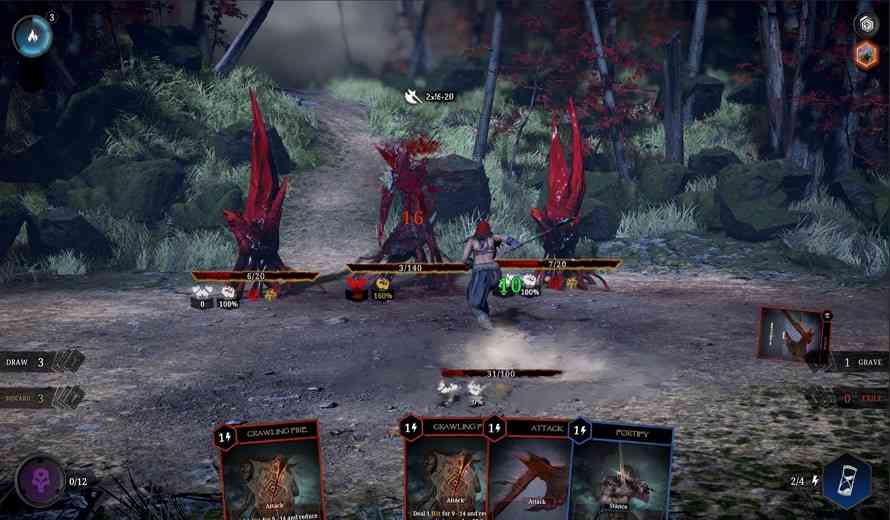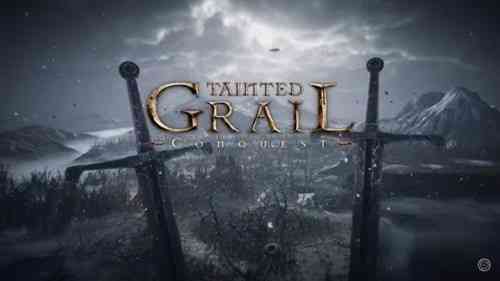Tainted Grail: Conquest Review
Based on a crowdfunded tabletop game (Tainted Grail: The Fall of Avalon) based on a novel (by Krzysztof Piskorski), Tainted Grail: Conquest is a roguelike RPG deckbuilding game just emerging from six or so months in early access. It’s a challenging game and one of the rare times when the multi-genre mashup seems to work pretty well. Take the moody ambience of Diablo, mix in heaps of Slay the Spire and leaven the batter with some essence of Dark Souls difficulty and you’d have a product approximating Tainted Grail: Conquest.
A long, long time ago there was an MMORPG called Dark Age of Camelot. Tainted Grail is like the really dark age of Camelot, with the fabled Avalon beset by not just physical darkness but all manner of supernatural monstrosities, evil beings and human folk a misstep or two from annihilation and of course you are the hero that will dispel at least some of the gloom. To do so, you set out with your trusty Wyrdcandle lighting the way, exploring, fighting whatever blocks your path and hoping to survive the encounter before moving on to the next. Die, and in true roguelike fashion, you start all over again. Get really lucky with the cards — or get really good, put in the time to build your character and really lucky, and you’ll reach the boss.
Skill Plus Luck Equals Progression
Not unlike Dark Souls or several deckbuilding games you’ll encounter, rescue or befriend NPCs and merchants who will then appear in your town and one of the interesting wrinkles to Tainted Grail is the risk/reward ability to bypass encounters if a run is going particularly well or poorly. Most all of the human NPCs are sad sacks of woe with a story to tell or a bit of a sketchy proposition to offer and sometimes the consequences of your decisions aren’t always immediately apparent.
Maybe we’ve all become conversant in the mechanics of deckbuilding games by now, but Tainted Grail’s system is straightforward and a little pared down. The enemy’s cards are not visible but you can hover over the opposition for a hint as to their next move. There are Tainted Grail versions of the usual buffs, debuffs, shields and spells and for several of the classes, cards that summon friendly monsters. There are several summoner-type classes and although each handles the benefits and cost of summoning a slightly different way, they all share the same basic roster of fae, golems, tentacled monsters and bugs. Although not all the classes are available pre-launch (and thus, for review), the magic using/summoner classes and their mechanics are very similar and the melee classes are likewise often very defensively weak. especially against multiple enemies or mini-bosses early on.

The main game is by intent quite difficult and, like with most roguelikes, the loop of repeated runs with weak characters that struggle with early encounters quickly moves from enjoyably challenging to repetitively frustrating, made all the more so by lack of variety in enemy and card types in the early parts of a run. Acknowledging this potential for frustration, there is a Scenarios or Easy mode, but while the overall difficulty is reduced slightly, the issues of repetition and lack of variety in combat aren’t much addressed. In both the standard and easy modes, battles often take way too long and most often devolve into protracted, incremental give-and-takes. Tainted Grail would benefit from some sort of auto battle calculator to occasionally speed things along.
Moody & Mysterious
During exploration, Tainted Grail’s world has a gauzy, shimmery, soft-focus look that could charitably be described as moody and mysterious (or less charitably, as a disguise for less than detailed textures), but its art direction is definitely dark and distinctive. In battle, character animations and visual effects are generally fine but obviously play a secondary role to the tactics of the encounters and card battle mechanics, and most of the battles play out in the same environment, with largely the same, spare musical underscore heavy with percussion.

So often developers create a game using the kitchen-sink approach and it isn’t always clear how or why disparate mechanics deserve to play together. In the case of Tainted Grail: Conquest, deckbuilding, roguelike progression, and action RPG-type exploration feel compatible with each other as well as the dark fantasy setting and story. Less successful are the punishing, protracted battles that take too long and lack variety over multiple runs. With some additional balancing, classes, card types, and adjustment to pacing, Tainted Grail’s fundamentally solid concepts could shine through the darkness a little better.
***PC review code provided by the Publisher***
The Good
- Combines mechanics from 3 genres
- Easy to understand combat
- Moody setting and gothy classes
The Bad
- Main game is punishingly difficult
- Battles are protracted and lack variety
- Starts to become over-familiar very quickly

